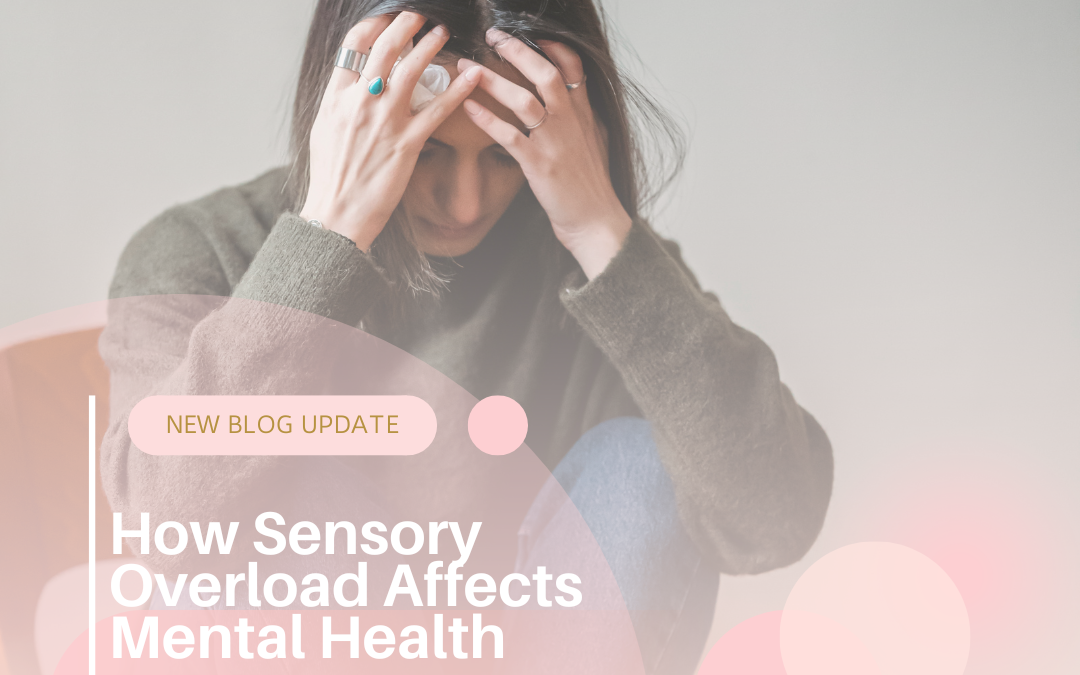Have you ever felt like the world was just too much? Like the lights were too bright, the sounds too loud, the smells too strong—and you just couldn’t focus, think, or breathe clearly? That feeling has a name: sensory overload. And while it might not be talked about as often in mainstream mental health conversations, it’s a real experience that can affect anyone—especially those who are neurodivergent or managing anxiety, trauma, or burnout.
What Is Sensory Overload?
Sensory overload happens when one or more of the body’s senses are overstimulated. This might be due to:
-
Loud noises or overlapping sounds (like a crowded restaurant)
-
Bright or flickering lights
-
Strong smells
-
Textures or clothing that feel uncomfortable
-
Even multiple things happening at once (like a TV on while someone is talking to you)
For some people, this overstimulation is simply irritating. But for others, it can trigger panic, shutdown, irritability, or dissociation. It’s not just about being “sensitive”—it’s about the brain receiving more input than it can process.
Who Experiences Sensory Overload?
Sensory overload is common among:
-
Autistic individuals
-
People with ADHD
-
Trauma survivors (especially those with PTSD)
-
Highly sensitive people (HSPs)
-
Those experiencing burnout, chronic stress, or anxiety
It’s also not unusual in everyday life. Ever snapped at someone for playing music too loud after a long day? That’s a small-scale version of sensory overload.
How It Affects Mental Health
Sensory overload doesn’t just create momentary discomfort—it can have ripple effects on emotional well-being:
-
Anxiety and panic attacks: Overstimulation can feel overwhelming and unsafe, triggering the fight-flight-freeze response.
-
Emotional exhaustion: Constant sensory input drains energy and cognitive bandwidth, leaving people mentally fatigued.
-
Social withdrawal: To avoid overstimulation, people may isolate themselves or avoid environments that are overwhelming.
-
Misdiagnosis: Sensory symptoms are sometimes mistaken for mood disorders or behavioral issues.
Practical Ways to Cope
You don’t have to live in a bubble to manage sensory overload. Here are a few strategies that can help:
-
Create a sensory-safe space: A quiet room with dim lighting and soft textures can give your nervous system a break.
-
Use noise-canceling headphones or earplugs in overstimulating environments.
-
Take sensory breaks: Step away from screens, crowds, or high-input settings to reset.
-
Practice grounding techniques to stay connected to your body and the present moment.
-
Communicate your needs: Let people know what helps or hurts—whether it’s turning down the volume or giving you space.
Final Thoughts
Sensory overload isn’t just a quirk—it’s a sign your nervous system is asking for support. By tuning into your sensory needs and building awareness, you can protect your mental health in a world that’s often too loud, too bright, and too fast. Honoring these experiences—without shame—can be a powerful step toward emotional regulation and self-compassion.


Recent Comments